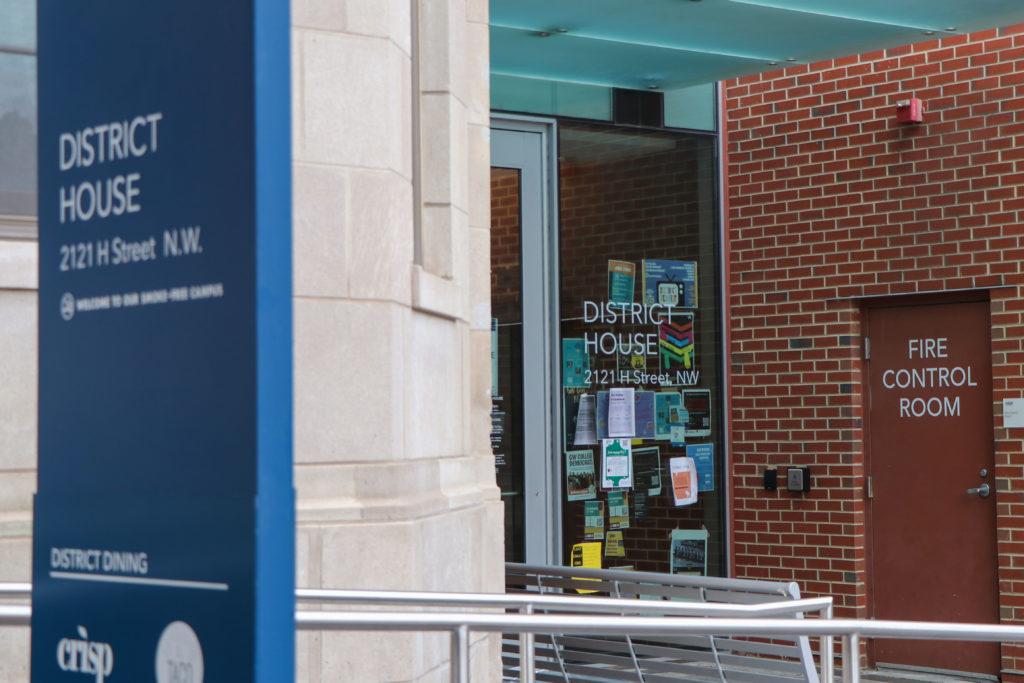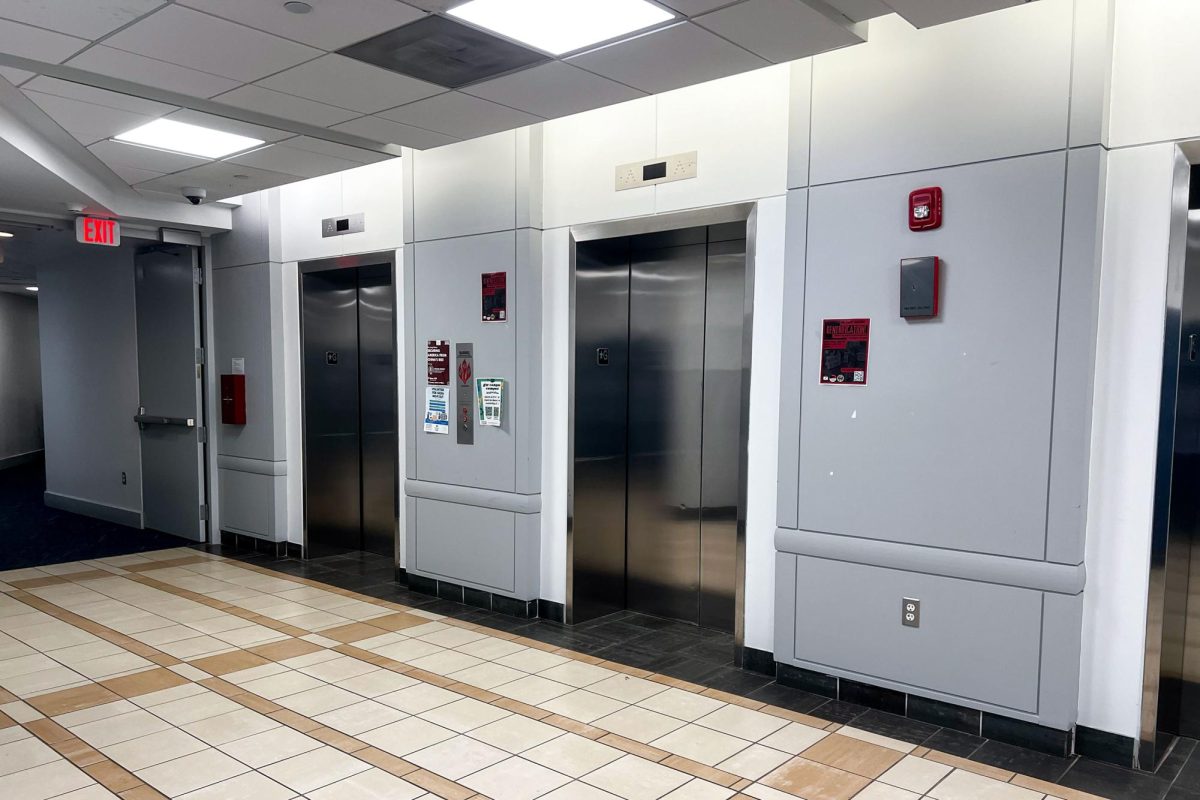Updated: Monday, Oct. 17, 2022 at 10:55 a.m.
Through remodeled dining venues and demolished buildings, the structural landscape of Foggy Bottom has transformed during the last five years, a sign of the neighborhood’s synchronous relationship with GW.
Since 2017, GW’s property investments have ranged from total demolition to dramatic renovations through multi-million dollar building sales, remodeled dining venues and legal agreements with the surrounding neighborhood and D.C. government. Local residents have reacted to the neighborhood’s evolution with mixed feelings, welcoming GW’s communication about the physical developments but resisting change that fails to include them in the decision-making process.
The changes have delivered Foggy Bottom new restaurants, office spaces and hotel deals likely to bring revenue to the area. But local critics of the changes have disagreed with GW’s demolition of campus buildings they associate with the neighborhood’s history and closures that have stripped dining options from the community.
“GW has a long history of working alongside our local partners and elected in seeking solutions to improve and enhance our city,” University spokesperson Daniel Parra said in an email. “These include contributions to educational, physical and environmental facilities and programs.”
Occupying Foggy Bottom since 1912, GW has long been near-synonymous with the surrounding neighborhood, playing a direct role in many of its changes over the century. Here are some of the most major shifts the two have undergone over the past few years:
GW set to reel in millions from hotel sales
GW has initiated the sales of two of its West End properties in the last year, as University planning has shifted toward a more centralized Foggy Bottom approach.
GW has owned One Washington Circle Hotel as an investment property since 2001, but opened the building for residential housing, taking in 282 students to compensate for lost capacity during Thurston Hall’s renovation. GW announced plans to sell the property months later, while officials stressed it was not central to the University’s future real estate plans.
“The current state of the capital markets and the demand for multifamily and hotel properties in Washington, D.C. renders this a perfect time to market the property and explore a sale or ground lease of this asset in support of our broader academic goals,” Bruno Fernandes, the current chief financial officer, said in a news release last December.
GW sold the property to real estate firm Electra America for about $12 million in May of 2022. That same month, GW announced plans to sell The Aston, which mainly housed upperclassmen and is valued at $38 million, according to the D.C. Office of Tax and Revenue.
Fernandes said the Aston’s off-campus location was not a good fit for students, which factored into the decision to sell the property.
“The Aston has been a valuable asset to the University for many years, but its off-campus location is not ideal for student residences,” Fernandes said in a release earlier this year.
GW has owned the Aston, located 10 minutes from campus, for 26 years before initiating its sale. In the spring of 2022, GW offered Aston residents $250 in housing credits after some dealt with a myriad of maintenance issues, leaks and mold during the previous academic year.
Food hall openings reconfigure dining landscape
Four dining venues have hung in the balance of Foggy Bottom’s remodeled dining scene in the past two years. Ten private dining vendors have opened since last fall in Western Market – a food hall housed inside the GW-owned complex at 2000 Pennsylvania Avenue.
At a Foggy Bottom and West End Advisory Neighborhood Commission meeting last month, Commissioner Yannik Omictin said Western Market has become increasingly popular among residents, tourists and students amid a “massive” expansion in vendors and employees. At the same meeting, Commissioner Trupti Patel said Western Market has made strides in bringing new revenue to Foggy Bottom, helping retain businesses thrive in the area.
“Western Market is going to restore a lot of vibrancy and economic prosperity to our ANC, and we already know that Foggy Bottom has not been seen as a popular destination,” Patel said during the meeting. “We’ve seen how businesses just leave when they don’t have people coming to them.”
MRP Realty and Westbrook Partners purchased Western Market from GW for more than $75 million while also buying a 75-year lease to the ground where Western Market is located for more than $62 million, according to the D.C. Recorder of Deeds.
GW closed public access to the food court in District House’s basement earlier this year because of safety concerns while converting the site into an all-you-can-eat dining hall as part of a revamped, unlimited dining system. The University opened a dining hall in Thurston Hall last week and will do the same next semester in Shenkman Hall – which sandwich shop Potbelly and a series of other vendors vacated in the past two years – as part of the new system, which officials announced last August.
Patel said the previous incarnation of the food court – which featured restaurants like Chick-fil-a and Kin’s Sushi, both set to relocate to different locations in 2023 – was a popular spot for elderly residents to eat for cheap and relax. Local residents were concerned that the closure of the food court would limit affordable dining options in Foggy Bottom.
“It was considered like a place where an elderly citizen could be able to get a meal in a safe environment that wasn’t very far from their home,” Patel said in an interview.
Facility transformations split between demolition, renovation
GW has demolished a pair of aged buildings on campus, each torn down less than a year apart in 2021 and 2022.
The University razed the Waggaman House, which formerly housed the Nashman Center for Civic Engagement and Public Service, in October of last year, replacing the structure with a spread of green space at the corner of I and 22nd streets.
Eight months later, GW also tore down Staughton Hall, a building that the University used as a women’s residence hall and a naval research center on 22nd Street for more than 100 years. As of October, officials have said GW does not have any plans for a new building to go in the place of Staughton, but officials said in January that the space is “well-occupied” for green space until any possible redevelopment takes place.
“There are currently no plans to redevelop the site formerly occupied by Staughton Hall,” a University spokesperson said in an email.
GW’s ongoing 2007 Foggy Bottom Campus Plan, which the University has used as a “framework for development” over the last 15 years, marks the lots that held Staughton Hall and the Waggaman House as potential sites for academic development.
Some residents, like members of the Foggy Bottom Association, have disagreed with the demolitions of the Waggaman House and Staughton Hall, and some offered to help digitally preserve Staughton.
Frank Leone, the co-chair of the Foggy Bottom Association’s project to document the history of buildings in the neighborhood, said he appreciated the University’s efforts to record Staughton with pictures of the areas around and inside the building before demolition. Leone said while he appreciates Foggy Bottom’s history, he understood why GW needed to demolish old buildings the University wasn’t actively using under the 2007 Campus Plan, and said he is working with GW develop a policy to preserve older buildings through photographs and documents.
“We’d like them to try to preserve them and we’d be happy to help,” Leone said.
GW entered a 75-year, $194 million lease with Boston Properties to develop the building at 2100 Pennsylvania Ave., a glass office complex located across the street from District House and Lafayette Hall. The planning stages of the project began in 2017 when GW leased its Rice Hall and Pennsylvania Avenue properties at the site to be developed into a modern business space.
“GW is excited by the opportunity to once again partner with Boston Properties to deliver a first-class commercial development that will activate the Foggy Bottom Campus,” Lou Katz, then-executive vice president of finance and treasurer, said in a release at the time.
Following a multitude of complaints from students stemming from its allegedly noisy construction, 2100 Penn is slated to finish construction this year and has attracted several restaurants, like popular bakery Tatte, and law firms like WilmerHare, set to remain in Foggy Bottom for the long term.
Reflecting on the deep history of the local neighborhood in December, Leone said GW and its consistent structural makeovers have had a strong influence over the development of Foggy Bottom for more than a century.
“You can’t talk about Foggy Bottom without talking about GW,” Leone said.
Tyler Krambeer and Zach Blackburn contributed reporting
This post has been updated to clarify the following:
This post has been updated to properly contextualize Leone’s comments about the digital preservation of historic buildings in Foggy Bottom.







